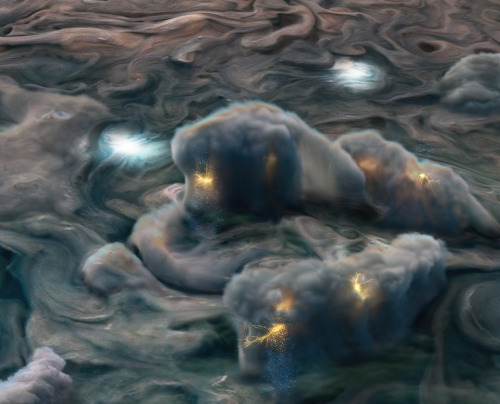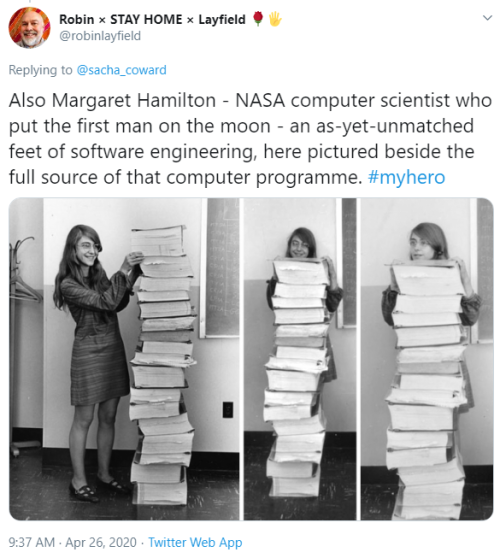Fluid Dynamics In All Its Glory
Fluid dynamics in all its glory
More Posts from Science-child and Others

Johannes Kepler
Johannes Kepler was a German mathematician, astronomer, and astrologer.
Kepler is a key figure in the 17th-century scientific revolution. He is best known for his laws of planetary motion, based on his works Astronomia nova, Harmonices Mundi, and Epitome of Copernican Astronomy. These works also provided one of the foundations for Isaac Newton’s theory of universal gravitation.
In astronomy, Kepler’s laws of planetary motion are three scientific laws describing the motion of planets around the Sun.
The orbit of a planet is an ellipse with the Sun at one of the two foci.

A line segment joining a planet and the Sun sweeps out equal areas during equal intervals of time.

The square of the orbital period of a planet is proportional to the cube of the semi-major axis of its orbit.

Most planetary orbits are nearly circular, and careful observation and calculation are required in order to establish that they are not perfectly circular. Calculations of the orbit of Mars, whose published values are somewhat suspect, indicated an elliptical orbit. From this, Johannes Kepler inferred that other bodies in the Solar System, including those farther away from the Sun, also have elliptical orbits.
Kepler’s work (published between 1609 and 1619) improved the heliocentric theory of Nicolaus Copernicus, explaining how the planets’ speeds varied, and using elliptical orbits rather than circular orbits with epicycles.
Isaac Newton showed in 1687 that relationships like Kepler’s would apply in the Solar System to a good approximation, as a consequence of his own laws of motion and law of universal gravitation.
Johannes Kepler
Kepler’s laws of planetary motion
Is there any chance that something could go wrong?
Will the robot be able to send vedio footage?

New results from our Juno mission suggest the planet is home to “shallow lightning.” An unexpected form of electrical discharge, shallow lightning comes from a unique ammonia-water solution.
It was previously thought that lightning on Jupiter was similar to Earth, forming only in thunderstorms where water exists in all its phases – ice, liquid, and gas. But flashes observed at altitudes too cold for pure liquid water to exist told a different story. This illustration uses data obtained by the mission to show what these high-altitude electrical storms look like.
Understanding the inner workings of Jupiter allows us to develop theories about atmospheres on other planets and exoplanets!
Illustration Credit: NASA/JPL-Caltech/SwRI/MSSS/Gerald Eichstädt/Heidi N. Becker/Koji Kuramura
Make sure to follow us on Tumblr for your regular dose of space: http://nasa.tumblr.com
"If I have seen farther, it is by standing on the shoulders of giants."
-Isaac Newton-
February 5, 1676
Discovering the Universe Through the Constellation Orion
Do you ever look up at the night sky and get lost in the stars? Maybe while you’re stargazing, you spot some of your favorite constellations. But did you know there’s more to constellations than meets the eye? They’re not just a bunch of imaginary shapes made up of stars — constellations tell us stories about the universe from our perspective on Earth.

What is a constellation?
A constellation is a named pattern of stars that looks like a particular shape. Think of it like connecting the dots. If you join the dots — stars, in this case — and use your imagination, the picture would look like an object, animal, or person. For example, the ancient Greeks believed an arrangement of stars in the sky looked like a giant hunter with a sword attached to his belt, so they named it after a famous hunter in their mythology, Orion. It’s one of the most recognizable constellations in the night sky and can be seen around the world. The easiest way to find Orion is to go outside on a clear night and look for three bright stars close together in an almost-straight line. These three stars represent Orion's belt. Two brighter stars to the north mark his shoulders, and two more to the south represent his feet.

Credit: NASA/STScI
Over time, cultures around the world have had different names and numbers of constellations depending on what people thought they saw. Today, there are 88 officially recognized constellations. Though these constellations are generally based on what we can see with our unaided eyes, scientists have also invented unofficial constellations for objects that can only be seen in gamma rays, the highest-energy form of light.
Perspective is everything
The stars in constellations may look close to each other from our point of view here on Earth, but in space they might be really far apart. For example, Alnitak, the star at the left side of Orion's belt, is about 800 light-years away. Alnilam, the star in the middle of the belt, is about 1,300 light-years away. And Mintaka, the star at the right side of the belt, is about 900 light-years away. Yet they all appear from Earth to have the same brightness. Space is three-dimensional, so if you were looking at the stars that make up the constellation Orion from another part of our galaxy, you might see an entirely different pattern!

The superstars of Orion
Now that we know a little bit more about constellations, let’s talk about the supercool cosmic objects that form them – stars! Though over a dozen stars make up Orion, two take center stage. The red supergiant Betelgeuse (Orion's right shoulder) and blue supergiant Rigel (Orion's left foot) stand out as the brightest members in the constellation.

Credit: Derrick Lim
Betelgeuse is a young star by stellar standards, about 10 million years old, compared to our nearly 5 billion-year-old Sun. The star is so huge that if it replaced the Sun at the center of our solar system, it would extend past the main asteroid belt between Mars and Jupiter! But due to its giant mass, it leads a fast and furious life.

Betelgeuse is destined to end in a supernova blast. Scientists discovered a mysterious dimming of Betelgeuse in late 2019 caused by a traumatic outburst that some believed was a precursor to this cosmic event. Though we don’t know if this incident is directly related to an imminent supernova, there’s a tiny chance it might happen in your lifetime. But don't worry, Betelgeuse is about 550 light-years away, so this event wouldn't be dangerous to us – but it would be a spectacular sight.
Rigel is also a young star, estimated to be 8 million years old. Like Betelgeuse, Rigel is much larger and heavier than our Sun. Its surface is thousands of degrees hotter than Betelgeuse, though, making it shine blue-white rather than red. These colors are even noticeable from Earth. Although Rigel is farther from Earth than Betelgeuse (about 860 light-years away), it is intrinsically brighter than its companion, making it the brightest star in Orion and one of the brightest stars in the night sky.

Credit: Rogelio Bernal Andreo
Buckle up for Orion’s belt
Some dots that make up constellations are actually more than one star, but from a great distance they look like a single object. Remember Mintaka, the star at the far right side of Orion's belt? It is not just a single star, but actually five stars in a complex star system.

Credit: X-ray: NASA/CXC/GSFC/M. Corcoran et al.; Optical: Eckhard Slawik
Sword or a stellar nursery?
Below the three bright stars of Orion’s belt lies his sword, where you can find the famous Orion Nebula. The nebula is only 1,300 light-years away, making it the closest large star-forming region to Earth. Because of its brightness and prominent location just below Orion’s belt, you can actually spot the Orion Nebula from Earth! But with a pair of binoculars, you can get a much more detailed view of the stellar nursery. It’s best visible in January and looks like a fuzzy “star” in the middle of Orion’s sword.

More to discover in constellations
In addition to newborn stars, Orion also has some other awesome cosmic objects hanging around. Scientists have discovered exoplanets, or planets outside of our solar system, orbiting stars there. One of those planets is a giant gas world three times more massive than Jupiter. It’s estimated that on average there is at least one planet for every star in our galaxy. Just think of all the worlds you may be seeing when you look up at the night sky!
It’s also possible that the Orion Nebula might be home to a black hole, making it the closest known black hole to Earth. Though we may never detect it, because no light can escape black holes, making them invisible. However, space telescopes with special instruments can help find black holes. They can observe the behavior of material and stars that are very close to black holes, helping scientists find clues that can lead them closer to discovering some of these most bizarre and fascinating objects in the cosmos.

Next time you go stargazing, remember that there’s more to the constellations than meets the eye. Let them guide you to some of the most incredible and mysterious objects of the cosmos — young stars, brilliant nebulae, new worlds, star systems, and even galaxies!

To keep up with the most recent stellar news, follow NASA Universe on Twitter and Facebook.
Make sure to follow us on Tumblr for your regular dose of space!




“I always remember having this fight with a random dude who claimed that ‘straight white men’ were the only true innovators. His prime example for this was the computer… the computer… THE COMPUTER!!! THE COM-PU-TER!!!
Alan Turing - Gay man and ‘father of computing’ Wren operating Bombe - The code cracking computers of the 2nd world war were entirely run by women Katherine Johnson - African American NASA mathematician and ‘Human computer’ Ada Lovelace - arguably the 1st computer programmer”
- Sacha Coward
Also Margaret Hamilton - NASA computer scientist who put the first man on the moon - an as-yet-unmatched feet of software engineering, here pictured beside the full source of that computer programme. #myhero
Grace Hopper - the woman that coined the term “bug”
- @robinlayfield
The Great Conjunction of Jupiter and Saturn

Credits: NASA/Bill Ingalls
Have you noticed two bright objects in the sky getting closer together with each passing night? It’s Jupiter and Saturn doing a planetary dance that will result in the Great Conjunction on Dec. 21. On that day, Jupiter and Saturn will be right next to each other in the sky – the closest they have appeared in nearly 400 years!
Skywatching Tips from NASA

Credits: NASA/JPL-Caltech
For those who would like to see this phenomenon for themselves, here’s what to do:
Find a spot with an unobstructed view of the sky, such as a field or park. Jupiter and Saturn are bright, so they can be seen even from most cities.
An hour after sunset, look to the southwestern sky. Jupiter will look like a bright star and be easily visible. Saturn will be slightly fainter and will appear slightly above and to the left of Jupiter until December 21, when Jupiter will overtake it and they will reverse positions in the sky.
The planets can be seen with the unaided eye, but if you have binoculars or a small telescope, you may be able to see Jupiter’s four large moons orbiting the giant planet.
How to Photograph the Conjunction

Credits: NASA/Bill Dunford
Saturn and Jupiter are easy to see without special equipment, and can be photographed easily on DSLR cameras and many cell phone cameras. Here are a few tips and tricks:
These planets are visible in the early evening, and you’ll have about 1-2 hours from when they are visible, to when they set. A photo from the same location can look completely different just an hour later!
Using a tripod will help you hold your camera steady while taking longer exposures. If you don’t have a tripod, brace your camera against something – a tree, a fence, or a car can all serve as a tripod for a several-second exposure.
The crescent Moon will pass near Jupiter and Saturn a few days before the conjunction. Take advantage of it in your composition!
Get more tips HERE.
Still have questions about the Great Conjunction?
Our NASA expert answered questions from social media on an episode of NASA Science Live on Thursday, Dec. 17. Watch the recording HERE.
Make sure to follow us on Tumblr for your regular dose of space: http://nasa.tumblr.com.
Are You Up to the Task of Navigating Space with NASA?

We’re committed to exploration and discovery, journeying to the Moon, Mars, and beyond. But how do we guide our missions on their voyage among the stars? Navigation engineers lead the way!
Using complex mathematical formulas, navigation experts calculate where our spacecraft are and where they’re headed. No matter the destination, navigating the stars is a complicated challenge that faces all our missions. But, we think you’re up to the task!
Our space navigation workbook lets you explore the techniques and mathematical concepts used by navigation engineers. The book delves into groundbreaking navigation innovations like miniaturized atomic clocks, autonomous navigation technologies, using GPS signals at the Moon, and guiding missions through the solar system with X-ray emissions from pulsars — a type of neutron star. It also introduces you to experts working with NASA’s Space Communications and Navigation program at Goddard Space Flight Center in Greenbelt, Maryland.
If you’re a high schooler who dreams of guiding a rover across the rocky surface of Mars or planning the trajectory of an observer swinging around Venus en route to the Sun, this workbook is for you! Download it today and start your adventure with NASA: https://go.nasa.gov/3i7Pzqr
The Legacy of Viking
On this day in 1976, we landed an ambitious mission on Mars –– the Viking 2 mission.
One of a pair of identical spacecraft, Viking found a place in history when it became the first U.S. mission to successfully land on Mars and return images of the surface.

Viking imaged and collected different types of data on the Martian surface. It also conducted experiments specifically designed to look for possible signs of life.
These experiments discovered unexpected chemical activity in the Martian soil but provided no clear evidence for the presence of living microorganisms.

Viking didn’t find unambiguous signs of life on Mars, but it made astrobiologists wonder if we devised the right tests. To this day, the results from Viking are helping to shape the development of life detection strategies at NASA.

So, what’s next in our search for life?
Our Mars 2020 Perseverance rover is the first mission designed to seek possible signs of past Martian life. For astrobiologists, the answers to questions about Mars’ habitability are in Perseverance’s “hands.” The robot astrobiologist and geologist launched earlier this year on July 30 and will touch down on Mars on Feb. 18, 2021.

Discover more about Viking and the history of exploration at Mars with our “Missions To Mars” graphic history novel here.
Make sure to follow us on Tumblr for your regular dose of space: http://nasa.tumblr.com
-
 ehy-e reblogged this · 2 months ago
ehy-e reblogged this · 2 months ago -
 dalonelybreadstick liked this · 2 months ago
dalonelybreadstick liked this · 2 months ago -
 originalpiratefun liked this · 4 months ago
originalpiratefun liked this · 4 months ago -
 designforliving-3 reblogged this · 4 months ago
designforliving-3 reblogged this · 4 months ago -
 sparklybean reblogged this · 11 months ago
sparklybean reblogged this · 11 months ago -
 draginfyre16 reblogged this · 1 year ago
draginfyre16 reblogged this · 1 year ago -
 overcaffeinatedexistentialcrisis reblogged this · 1 year ago
overcaffeinatedexistentialcrisis reblogged this · 1 year ago -
 pat-sajacking-off reblogged this · 1 year ago
pat-sajacking-off reblogged this · 1 year ago -
 saskjeeper reblogged this · 1 year ago
saskjeeper reblogged this · 1 year ago -
 vvarhound reblogged this · 1 year ago
vvarhound reblogged this · 1 year ago -
 subterraneanbanjos reblogged this · 1 year ago
subterraneanbanjos reblogged this · 1 year ago -
 swampwizards reblogged this · 1 year ago
swampwizards reblogged this · 1 year ago -
 thelightofseptember reblogged this · 1 year ago
thelightofseptember reblogged this · 1 year ago -
 thelightofseptember liked this · 1 year ago
thelightofseptember liked this · 1 year ago -
 spandoral liked this · 1 year ago
spandoral liked this · 1 year ago -
 whenquietthunders reblogged this · 1 year ago
whenquietthunders reblogged this · 1 year ago -
 parkgeunhoqkr liked this · 1 year ago
parkgeunhoqkr liked this · 1 year ago -
 ts714 liked this · 1 year ago
ts714 liked this · 1 year ago -
 josmiths liked this · 1 year ago
josmiths liked this · 1 year ago -
 deoprohnyabuty liked this · 1 year ago
deoprohnyabuty liked this · 1 year ago -
 okupatumente liked this · 1 year ago
okupatumente liked this · 1 year ago -
 boaleahaka liked this · 1 year ago
boaleahaka liked this · 1 year ago -
 coolcalmcollector-blog reblogged this · 1 year ago
coolcalmcollector-blog reblogged this · 1 year ago -
 cgms0001 liked this · 1 year ago
cgms0001 liked this · 1 year ago -
 alianintruder liked this · 1 year ago
alianintruder liked this · 1 year ago -
 miritiroconleggerezza liked this · 1 year ago
miritiroconleggerezza liked this · 1 year ago -
 hers1rvant reblogged this · 1 year ago
hers1rvant reblogged this · 1 year ago -
 hers1rvant liked this · 1 year ago
hers1rvant liked this · 1 year ago -
 coolcalmcollector-blog liked this · 1 year ago
coolcalmcollector-blog liked this · 1 year ago -
 gentlemanvodkaandthoughts liked this · 1 year ago
gentlemanvodkaandthoughts liked this · 1 year ago -
 theshootingcyclist reblogged this · 1 year ago
theshootingcyclist reblogged this · 1 year ago -
 markcha3 liked this · 2 years ago
markcha3 liked this · 2 years ago -
 sylphscope liked this · 2 years ago
sylphscope liked this · 2 years ago -
 gelquie reblogged this · 2 years ago
gelquie reblogged this · 2 years ago -
 geotormenta liked this · 2 years ago
geotormenta liked this · 2 years ago
